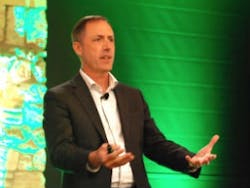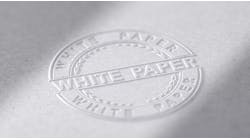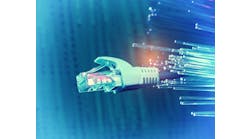"The electronics industry is facing many challenges, such as new products like smart phones only lasting a couple of years between releases, while users want Tricon to last 30 years or more.” Triconex’s Chris Stogner revealed the roadmap for brand success at this week’s Schneider Electric Innovation Days in Austin, Texas.
Sometimes traditional values and strengths are just what's needed to meet future challenges, and one of the best examples is how Schneider Electric's Triconex process safety business and its Tricon and Trident controllers are adapting, innovating and converging to help users triumph over such challenges now and in an increasingly digitalized future.
"About a year ago, we started talking about linking safety and profitability, and that everything we do to achieve profitable safety with Triconex should be tied to productivity, performance and profit," said Steve Elliott, senior marketing director, Triconex. "Of course, the real trends are on the technology side, including digitalization, connectivity, big data and analytics, digital twins and the cloud. However, since we launched our Tricon CX process safety control system about two years ago, we've shipped and installed more than 150 systems with more than 70,000 I/O points at 56 sites for 46 companies in 21 countries. These are mainly emergency-shutdown systems, but they're also in high-hazard industries and are interacting more often with distributed control systems."
Chris Stogner, business director, Triconex, added that Tricon CX was developed to serve the broadest set of use cases and will be extended as it goes forward in a series of phases. "We continually stress that Tricon will not go away and that it will be a preferred product until the end of time. Tricon CX will also protect the installed base, but new modules will be released for Tricon and Tricon CX going forward."
Safety branches out
Elliott and Stogner reported on their efforts at the Triconex Technology Outlook session at the Schneider Electric Innovation Days this week in Austin, Texas.
Stogner reported that Tricon CX is presently securing marine certifications and that Tricon CX Version 11.5 is in final testing stages now and will be released in two months. This new version will increase the ability to mix and interoperate Tricon and Tricon CX systems. This will let users expand existing systems more easily; use the same engineering and maintenance tools; protect their legacy system investments and intellectual property; and better future-proof their applications.
"Tricon CX isn't new because it's an extension—in a smaller form factor—of the Tricon line that's been installed in about 20,000 applications over the past 20 years," explained Stogner.
Mix-and-merge technologies
Stogner added that Triconex is enabling fast, simple I/O marshaling with standard, off-the-shelf enclosures as part of Phase 1 to help simplify system engineering, allow faster project execution and reduce infrastructure costs. Launched in April 2019, these enclosures include:
- NEMA 4X, IP66 compliance for indoor and outdoor use;
- ATEX Zone 2 and FM Class I, Div. 2, certifications for hazardous areas;
- Up to 64 SIL 3 TMR universal I/O points individually configured as analog inputs for 4-20 mA or HART, digital inputs at 24 Vdc, plus 1 msec SoE, digital outputs, and analog outputs plus HART;
- Availability in 24 Vdc, 120 Vac and 240 Vac with redundant incoming feeds
- Adaptive field termination panels such as for pass-through and safety relays;
- Choice of multi-cable transits such as 64, 96 and 128 cables; and,
- RS-485 serial single- or multi-mode fiberoptic connectivity.
"Customers can also specify what they need online, and the system will generate the model number for them," added Stogner. "We're also working on Phase 2, which is scheduled for release in 2020, and will support more signal types.” These include three- and four-wire fire and gas detectors, thermocouples, resistance temperature detectors (RTDs), safety relays, isolators and intrinsic safety.
Stogner added that Triconex also plans to release Triconex CX Pulse Input Module in 2020, which will include eight independent triple-modular-redundant (TMR) pulse input points, a frequency range of 0.5 to 32,000 Hz and very sensitive, high-frequency inputs. Each input point will:
- Receive pulsed input voltages from a speed sensor;
- Convert the frequency value to speed value (rpm);
- Calculate acceleration value; and,
- Transmit the speed or frequency value and calculated acceleration on demand.
Perhaps most significantly, Stogner reported that Tricon is beginning to communicate and integrate more seamlessly with Schneider Electric's EcoStruxure Foxboro DCS. This is accomplished by Triconex's FDC280 TSAA driver, which is a unified communication module that puts Tricon on the DCS network. The FDC280 includes:
- Simultaneous support for Triconex TSAA, Modbus RTU and Modbus TPC protocols;
- Up to 16 Triconex PLCs per FDC280;
- Support for Trident, Tri-GP, Tricon and Tricon CX platforms;
- 40,000-tag capacity per FDC280; and,
- Support for Triconex HART data pass-through.
"The business value provided by FDC280 TSAA is high-availability integration, flexible implementation and use of Maintenance Advisor software," added Stogner.
Lifecycle maintenance, convergence coming
Stogner reported that Triconex released lifecycle status dates in April for its existing Tricon and Trident products. "We didn't have any dates before, but now we're just adding some to streamline our offerings," he explained. "The electronics industry is facing many challenges, such as new products like smart phones only lasting a couple of years between releases, while users want Tricon to last 30 years or more. This makes it difficult for us to estimate the buys we have to make from our suppliers."
As a result, Triconex reported that Trident Tri-GP's main processor and communication modules will be preferred and available until April 2020, mature in April 2025, designated lifetime status in April 2030 and obsolete in 2032.
Despite these deadlines, Stogner added the really good news is that Triconex has been laboring mightily to develop baseplates for Tricon CX that are the same size as Trident Tri-GP and can be refit with the same I/O and battery wiring. This will allow users to implement Trident modules onto Tricon CX any time during the next 10-12 years.
"This will let users upgrade without making new penetrations in their devices or making changes to their drawings," said Stogner. "This also means many benefits for users, such as no longer having to maintain two sets of spares.
“Tricon CX, Tricon, Trident and Tri-GP will be able to run on the user’s choice of form factor, including Tricon CX chassis, Tricon CX baseplate or Tricon chassis," said Stogner. "And in Phase 3, the Tricon CX baseplate will allow more I/O and a wider temperature range.”
Convergence means users will be able to mix and match these components and design their network architectures as they desire to maximize cost-effectiveness, Stogner said. “At the same time, we're also allowing our hardware to interact more closely with our digital engineering tools and software, such as Process Safety Advisor, Safety View, Safety Validator, and Digital Commissioning and Maintenance Advisor. This year, we're also releasing our Diagnostic Expert integrated maintenance environment software; HART at Ethernet speed that will be part of Version 11.5; and Digital Commissioning to automatically detect devices, build network trees, determine which to test and automatically document loop tests. In 2020, we'll release priority alarm and bypass management software."






